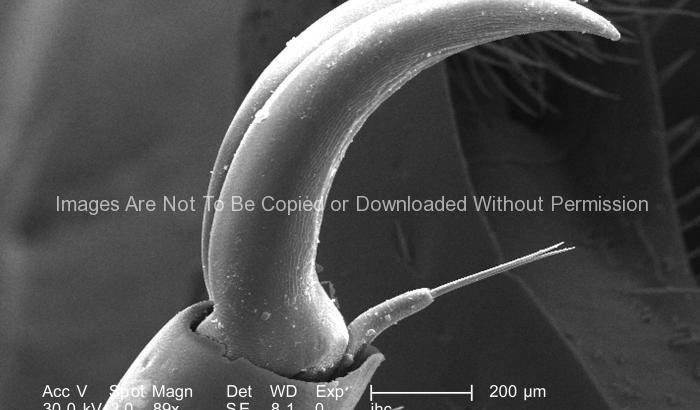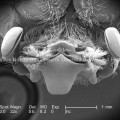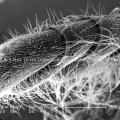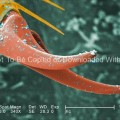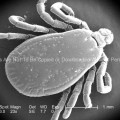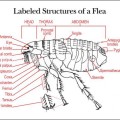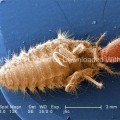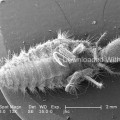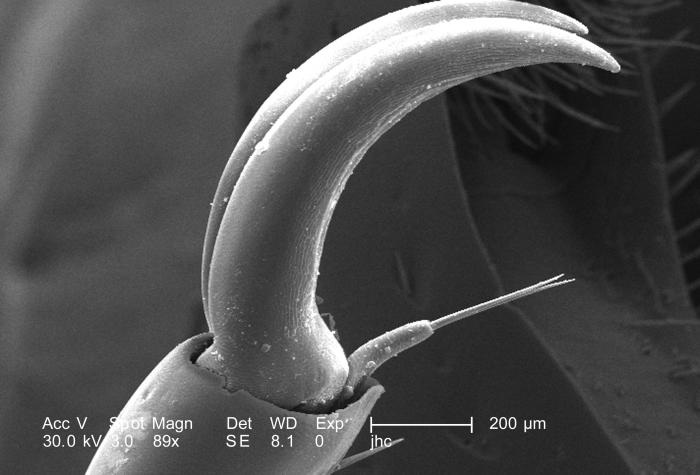
Still at a low magnification of 89X, this scanning electron micrograph (SEM) depicts some of the morphologic exoskeletal features located at the distal end of an adult “figeater” beetle’s, Cotinis mutabilis leg. Depicted here was the claw-like tip of the insect’s 5th tarsomere, as well as its accompanying empodium. This appendicular configuration affords the beetle a secure grasp of objects within its environmental domain, such as foliage or food.
Due to the jointed nature of this organism’s leg configuration, it is classified in the phylum, Arthropoda, i.e., “Arthro” = jointed, and “poda” = legs. This beetle was found in the Decatur, Georgia suburbs.
The dorsum of the adult figeater beetle is a drab green color, while its ventral surface is a vivid iridescent green. Their diet mainly consists of soft, overly ripe fruits including figs, hence its name. However, it’s the larval phase of this insect, which wrecks more havoc upon agricultural crops than adults, for the larvae, which burrow into the soils, will feed upon the crop roots, thereby, killing the fruit-bearing plants.
